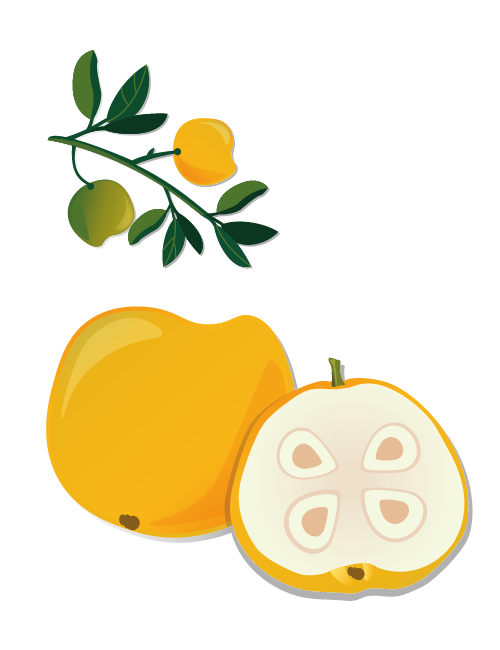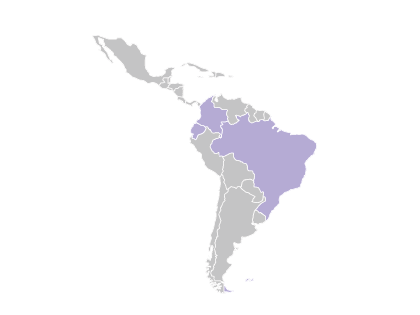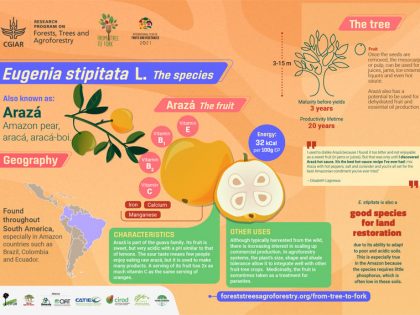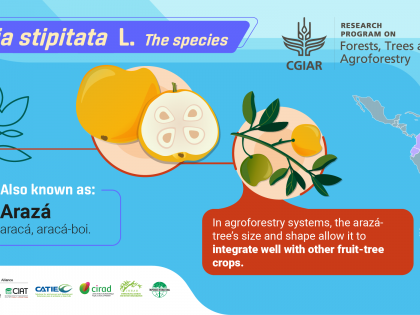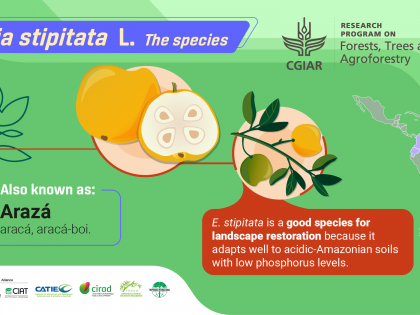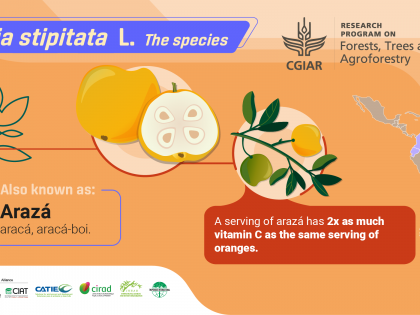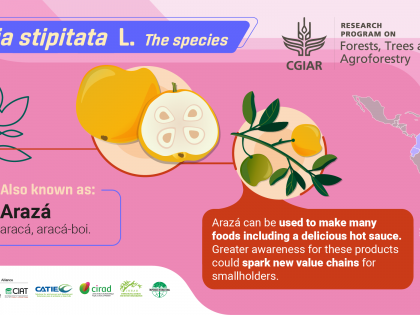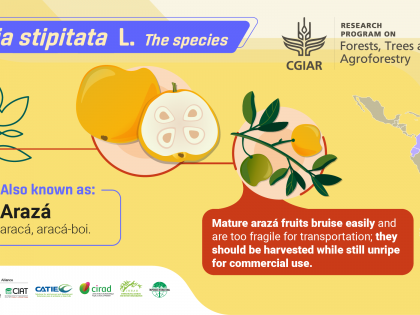Geography
Found throughout South America, especially in Amazon countries including Brazil, Colombia and Ecuador.
Uses
Arazá is part of the guava family. Its fruit is sweet, but very acidic with a pH similar to that of lemons. The sour taste means few people enjoy eating raw arazá, but it is used to make many products. Once the seeds are removed, the yellowish-green mesocarp, or pulp, can be used to make juice, jam, ice-creams, hot sauce and even liquor. However, its flavour boils away easily when cooked, so jams are best made by quick boiling. The fruit also has a potential to be used for dehydrated fruit and essential oil production.
In Peru, the fruit is sold on local markets, but farmers struggle to sell their produce at a decent price. Some actors are trying to develop markets for other products (e.g. jam) that allow the fruit to have a longer shelf-life. However, few efforts have been proven successful so far.
Although typically harvested from the wild, there is increasing interest in scaling up commercial production (if the market supports it). In agroforestry systems, the plant’s size, shape and shade tolerance allow it to integrate well with other fruit-tree crops. Additionally, arazá fruits on farms could contribute to improved diet diversity for smallholders
E. stipitata is a good species to rehabilitate degraded land because of its ability to adapt to poor and acidic soils. Such resilience, along with its potential for commercialization could generate more income for smallholders if there were a better markets for arazá.
Medicinally, arazá is rich in antioxidants and is sometimes taken as a treatment for parasites.


